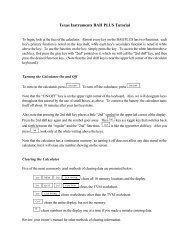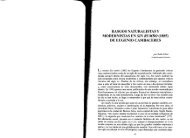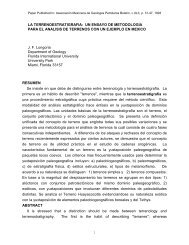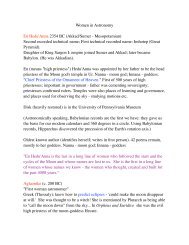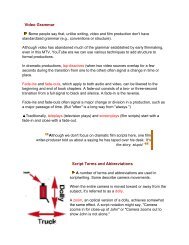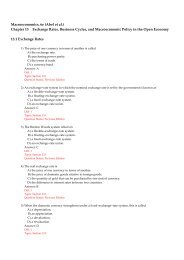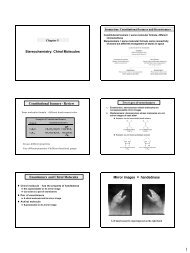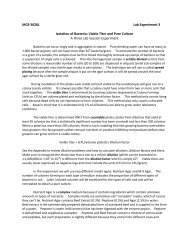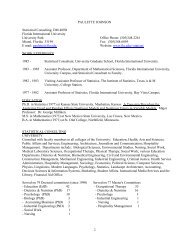Confidence Intervals and Hypothesis Tests: Two Samples - Florida ...
Confidence Intervals and Hypothesis Tests: Two Samples - Florida ...
Confidence Intervals and Hypothesis Tests: Two Samples - Florida ...
You also want an ePaper? Increase the reach of your titles
YUMPU automatically turns print PDFs into web optimized ePapers that Google loves.
STATSprofessor.com<br />
Chapter 9<br />
These are basically the same seven steps that we used to test hypotheses in previous sections; however,<br />
there are some minor changes that occur in the steps with asterisks by them. For example, the<br />
hypotheses will look as described above, <strong>and</strong> we will have a new test statistic, given by:<br />
z =<br />
( )<br />
X − X − D<br />
1 2 0<br />
σ σ<br />
+<br />
n n<br />
2 2<br />
1 2<br />
1 2<br />
Other important things to consider are the test assumptions, which are as follows:<br />
1. The samples are r<strong>and</strong>omly selected <strong>and</strong> independent.<br />
2. The sample sizes are both > 30.<br />
Example 133: <strong>Tests</strong> of the effectiveness of Echinacea in preventing upper respiratory infections in<br />
children were conducted in double blind studies. “Days of<br />
Fever” was one criteria used to test the effectiveness of<br />
Echinacea. Among 337 children treated with Echinacea,<br />
the mean number of days with fever was 0.81, with a<br />
st<strong>and</strong>ard deviation of 1.5 days. Among 370 children given a<br />
placebo, the mean number of days of fever was 0.64 with a<br />
st<strong>and</strong>ard deviation of 1.16 days (JAMA Vol. 290). Use a 5%<br />
significance level to test the claim that Echinacea affects the number of days with fever. What is the pvalue<br />
for the test?<br />
Example 134: In a case in Irel<strong>and</strong>, a class action lawsuit was brought<br />
against the government alleging age discrimination. The ages of 31<br />
r<strong>and</strong>omly selected unsuccessful applicants for promotion yielded a<br />
mean age of 47 <strong>and</strong> a st<strong>and</strong>ard deviation of 7.2 years. The ages of 30<br />
r<strong>and</strong>omly selected successful applicants yielded an average age of 43.9<br />
<strong>and</strong> a st<strong>and</strong>ard deviation of 5.9 years. Using a 5% significance level, test<br />
the claim that the government is discriminating based on age.<br />
5




